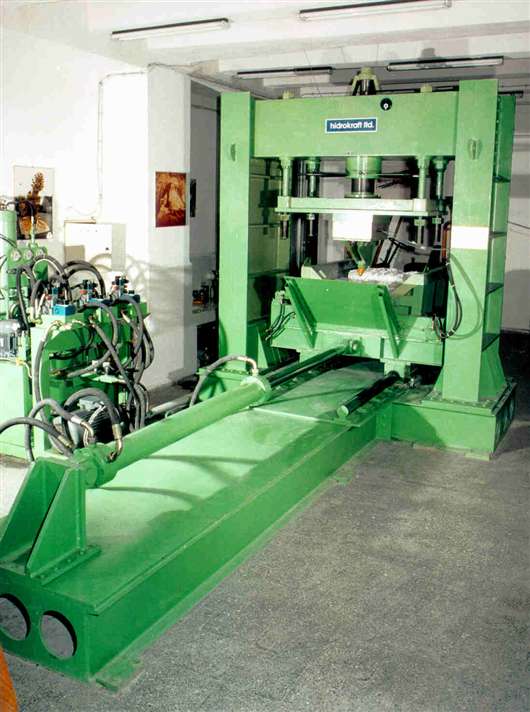The rig provides a direct measure of rock cuttability under simulated field conditions and is capable to accommodate the rock samples up to 1 x 1 x 0.6 m with the minimum size determined by cutting conditions and any size of commercial rock cutters, i.e., roller cutters or drag tools. A computer based data acquisition system, in conjunction with a triaxial dynamometer, provides the three-dimensional forces on the cutter; up to 50 tons for thrust forces, 30 tons for roller forces and 10 tons for sideways forces. The machine can simulate a wide variety of excavation conditions, the speed of cutting can be varried, the rock or the cutter can be skewed, any cutting patterns can be duplicated, i.e.,single or double kerf cutting.
Full scale cutting tests provide basic data to determine the best cutter type, optimum design of cutting tool layout, cutter head geometry, prediction of cutting performance of any type of mechanical excavator and the selection of the most suitable cutting machine for the rock tested.
The right combination of tool spacing, penetration and array geometry gives the best possible production rate for a given machine, lowers the cutting energy and optimizes the energy transfer to the rock.
Many excavation projects require consideration of the amount of fine generated during excavation. The cuttings, from the tests can be collected for size analysis. Information on size distribution provides valuable data on the amount of fines generated by the cutting action that can be used to design ventilation systems.
